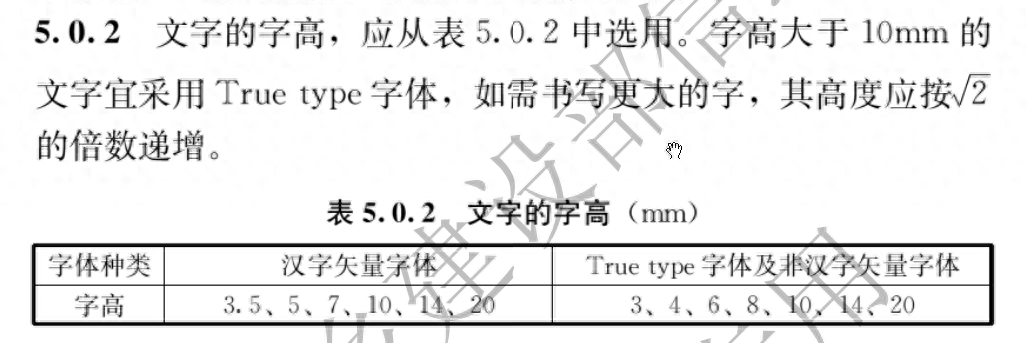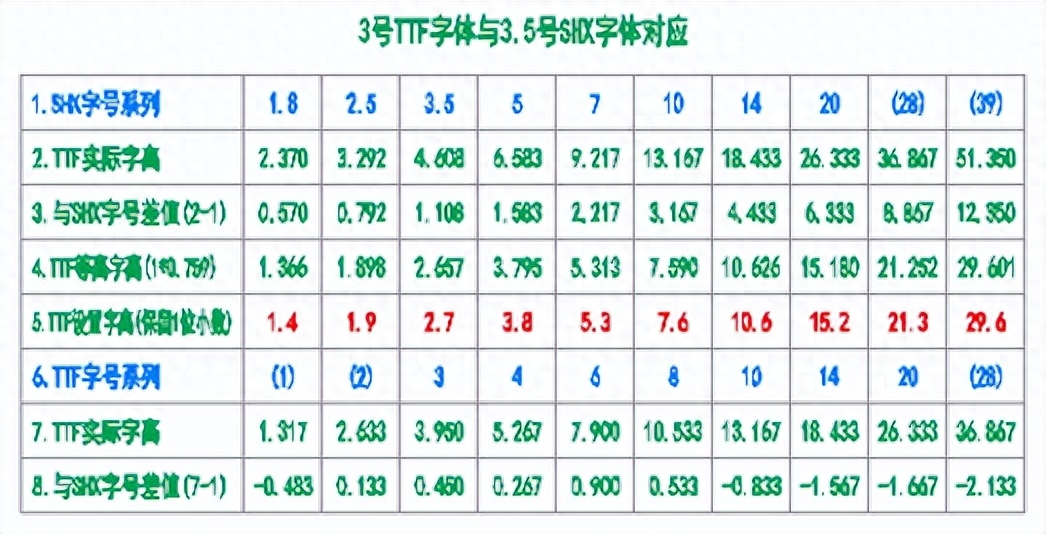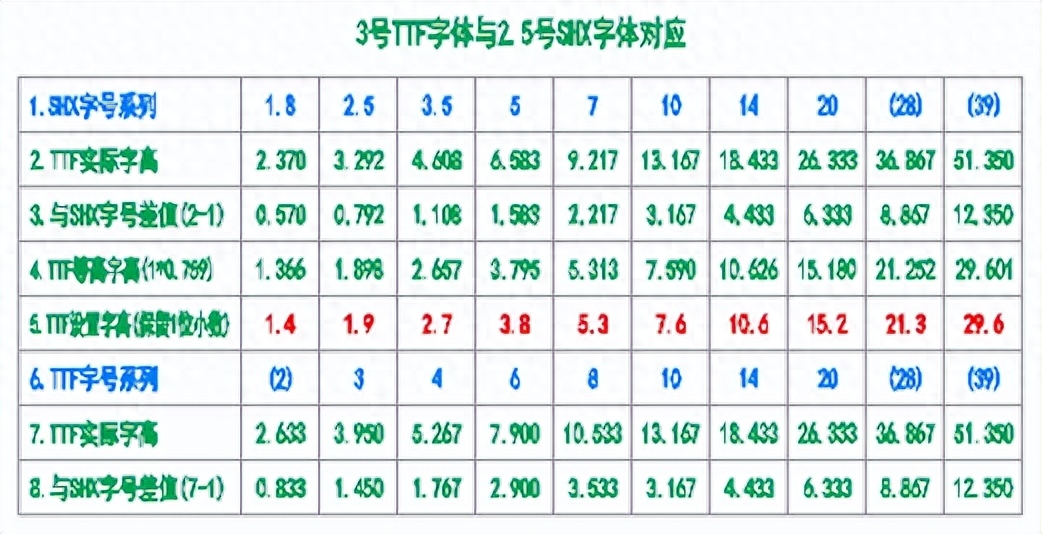On the previous In this article, we saw that TTF and SHX are two different types of fonts. There is a big difference between the height of Chinese and Spanish fonts in the same font size. That is to say, TTF cannot be set according to the nominal size series of SHX. The font height is also the reason why Article 5.0.2 of the "Uniform Standard for Building Architectural Drawings" GB/T 50001-2017 stipulates the font size of TTF fonts separately.
However, at that time, the reference to TTF font size was only mentioned briefly. Afterwards, I always felt that something was missing. This article will focus on this aspect. , make a specific numerical comparison between the TTF font size and SHX font size specified in the standard to see how big the difference is between the two.
The first thing to make clear is,The font size of CAD engineering drawings is defined based on the nominal size of SHX font, see the figure below (Figure 1) .

(Figure 1)
From the picture,The font size height of Chinese SHX imitation Song font and English TTF long Song font is equal to the actual measured height. It should be noted that the Chinese "character height" measurement value of the SHX font is 3.732 because its nodes exceed the upper baseline, but the actual height is still 3.5 (the visual difference is minimal). This is similar to the situation of the English "ABC" in the SHX font. "ABC" looks short, but its nodes coincide with the upper baseline.
So, from the perspective of measured height or actual height,We can also think that the font size is based on Chinese SHX and English TTF.
(Note: The measurement value of the font is based on the height between the font insertion point and the node. Since I am used to using multi-line text, The nodes of multi-line text are directly related to the "defined height" of the text. Different "defined heights" have different node positions, so their measured values will also be different, although the height of the font itself does not change. In order to avoid causing Error, the "defined height" of the text will always remain 0.)
Regarding the font size in CAD engineering drawings, the following two standards are involved:
1. For the font size of SHX font, please refer to Article 3.2 of "Technical Drawing Fonts" (GB/T 14691-1993), see the figure below ( figure 2).

(Figure 2)
2. For the font size of TTF fonts, please refer to Article 5.0.2 of the "Uniform Standard for Building Architectural Drawings" (GB/T 50001-2017). See the picture below (Figure 3).

(Figure 3)
For the font types in Table 5.0.2, "Chinese character vector font" refers to SHX font, with a total of 6 character heights; "True type font" " refers to the TTF font, with a total of 7 font heights.
Since the numbers of the two are inconsistent, the problem of how to correspond arises, so we simply compared the two situations, and based on the "Technical Drawing Fonts" 》 (GB/T 14691-1993) Article 3.2, expanded to 10 font height series (the numbers in brackets in the figure below are the expanded font sizes).
1. According to Article 3.3 of "Technical Drawing Fonts" (GB/T 14691-1993) "The height h of Chinese characters should not be less than 3.5mm" According to the regulations, first consider that the relationship between the two starts from No. 3 of TTF corresponding to No. 3.5 of SHX. See the figure below (Figure 4).

(Figure 4)
In this case, the height difference between the TTF font and the SHX font is relatively small (see line 8), and the commonly used TTF No. 3 Compared with size 3.5 SHX, size 4 TTF and size 5 SHX fonts, the differences are 0.450 and 0.257 respectively, which are basically negligible.
But the problem is that starting from font size 10, the font size is numerically different by one level, which looks very uncomfortable. Since the Chinese TTF font size is always larger than the SHX font size, then just like after size 10, the standard simply stipulates that the TTF font size is one size smaller than SHX, that is, 3, 4, 6, and 8 are changed to 2.5 respectively. , 3.5, 5, 7, keep the font size value of SHX unchanged, this is clear and logical, but the height difference has changed from positive deviation to negative deviation.
2. For comparison, TTF No. 3 corresponds to SHX No. 2.5, see the figure below (Figure 5).

(Figure 5)
In this case, the height difference between TTF font and SHX font is relatively large, and as the font size increases, the difference becomes larger It's getting bigger, but what's more pleasing to the eye is that starting from size 10, the font sizes are all in one-to-one correspondence.
After comprehensive comparison, the first situation should be adopted.
In short, the font size of TTF fonts is somewhat different from its actual height,In other words, for Chinese characters, the font size value does not reflect its true font height. For this, Figure 4 above , the red value in the fifth line in Figure 5 gives the font size of the TTF font that reflects the true height.
Sure, it's not a big deal, what does it matter if the font is higher or lower? After all, the height, shortness, fatness and thinness of fonts does not affect the safety of life and property, so the drawing standards are recommended and there are no mandatory provisions. It's up to everyone to decide how to choose.
Next article, let’s talk about dimensioning styles.
Articles are uploaded by users and are for non-commercial browsing only. Posted by: Lomu, please indicate the source: https://www.daogebangong.com/en/articles/detail/CAD-ji-shu-zi-ti-de-xuan-ze-yu-shi-yong-xu.html

 支付宝扫一扫
支付宝扫一扫 
评论列表(196条)
测试